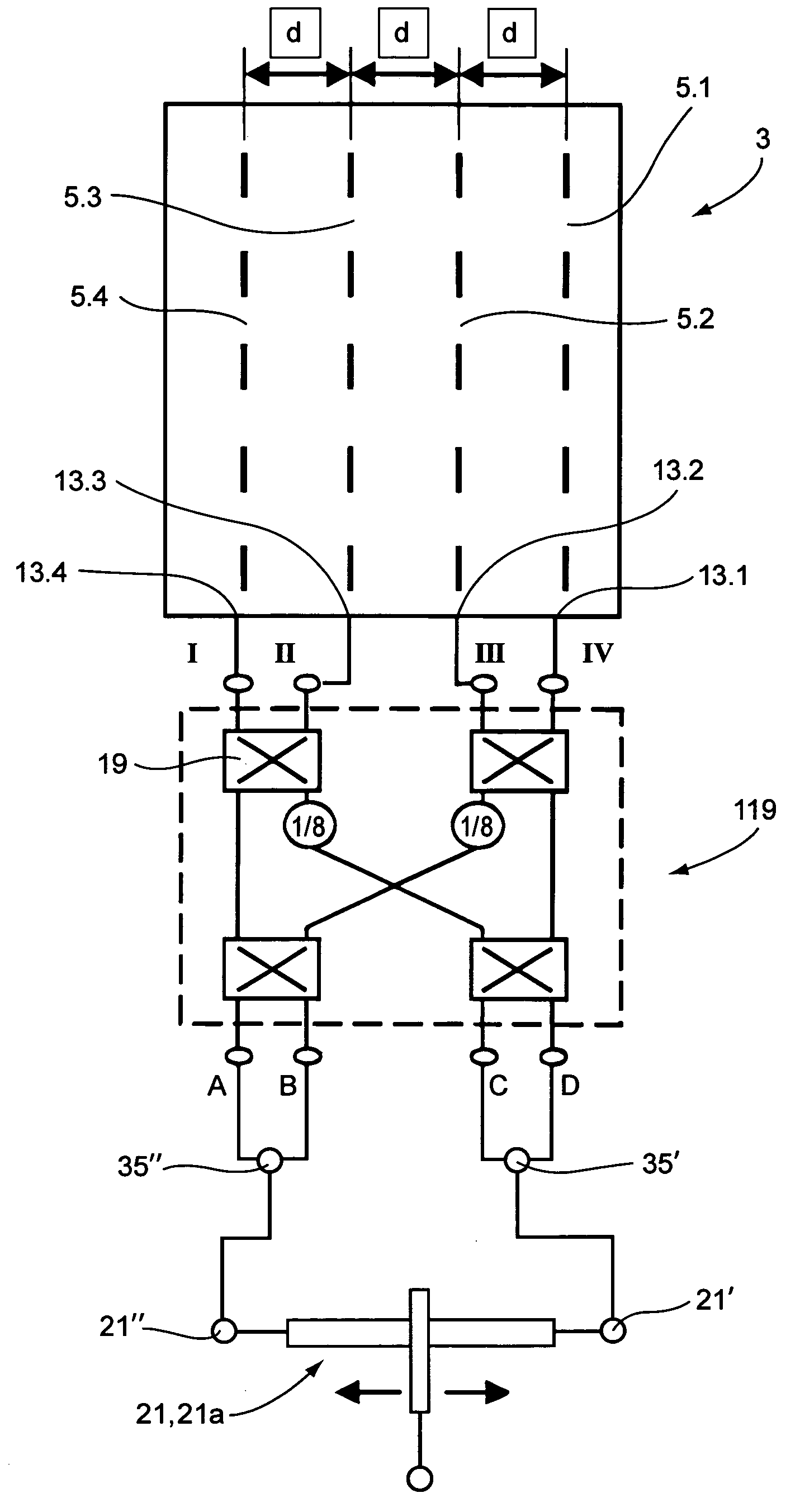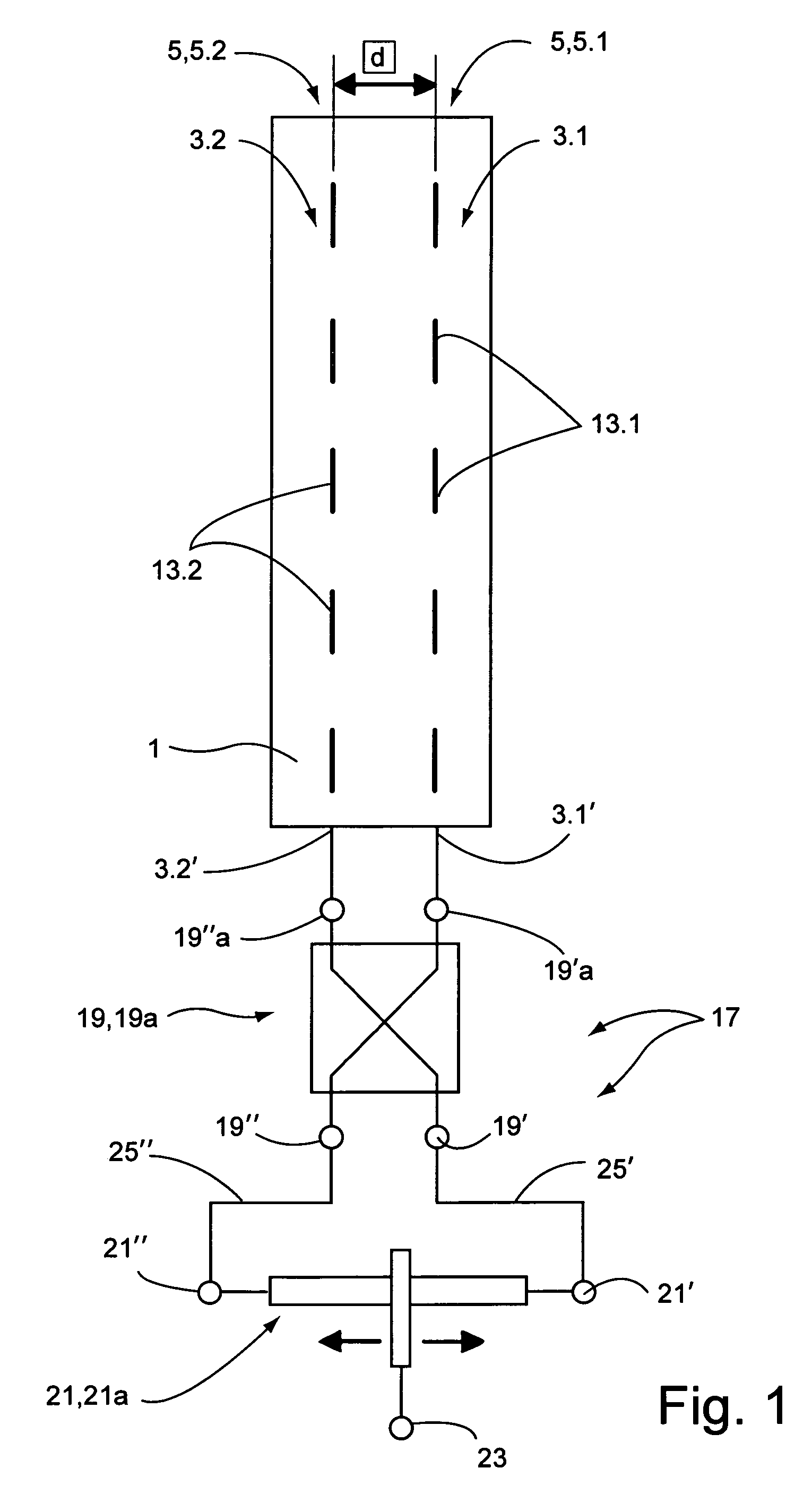Antenna arrangement with adjustable radiation pattern and method of operation
a radiation pattern and antenna technology, applied in the direction of antennas, antenna feed intermediates, electrical devices, etc., can solve the problems of inability to match location-specific characteristics, inability to change the angle of the antenna, and the complexity of the antenna arrangement is enormous, so as to achieve the effect of low power level, higher transmission intensity, and lower power level
- Summary
- Abstract
- Description
- Claims
- Application Information
AI Technical Summary
Benefits of technology
Problems solved by technology
Method used
Image
Examples
Embodiment Construction
[0050]The antenna arrangement shown in FIG. 1 has a reflector 1, in front of which two antenna systems 3.1, 3.2 are formed. In the illustrated exemplary non-limiting implementation, the antenna arrangement has two columns 5, that is to say a column 5.1 and a column 5.2, in each of which respective antenna elements 13.1 and 13.2 are arranged. In the illustrated exemplary non-limiting implementation, these antenna elements 13.1 and 13.2 may, for example, each be formed from five dipole antenna elements which are arranged one above the other, are aligned vertically and, in the illustrated exemplary non-limiting implementation, are arranged in the two columns at the same height and with a lateral separation d which can be predetermined. An antenna arrangement is thus described which, by way of example, transmits and receives in one polarization plane in one frequency band.
[0051]The antenna arrangement in the illustrated exemplary non-limiting implementation is fed via a network 17 which...
PUM
 Login to View More
Login to View More Abstract
Description
Claims
Application Information
 Login to View More
Login to View More - R&D
- Intellectual Property
- Life Sciences
- Materials
- Tech Scout
- Unparalleled Data Quality
- Higher Quality Content
- 60% Fewer Hallucinations
Browse by: Latest US Patents, China's latest patents, Technical Efficacy Thesaurus, Application Domain, Technology Topic, Popular Technical Reports.
© 2025 PatSnap. All rights reserved.Legal|Privacy policy|Modern Slavery Act Transparency Statement|Sitemap|About US| Contact US: help@patsnap.com



